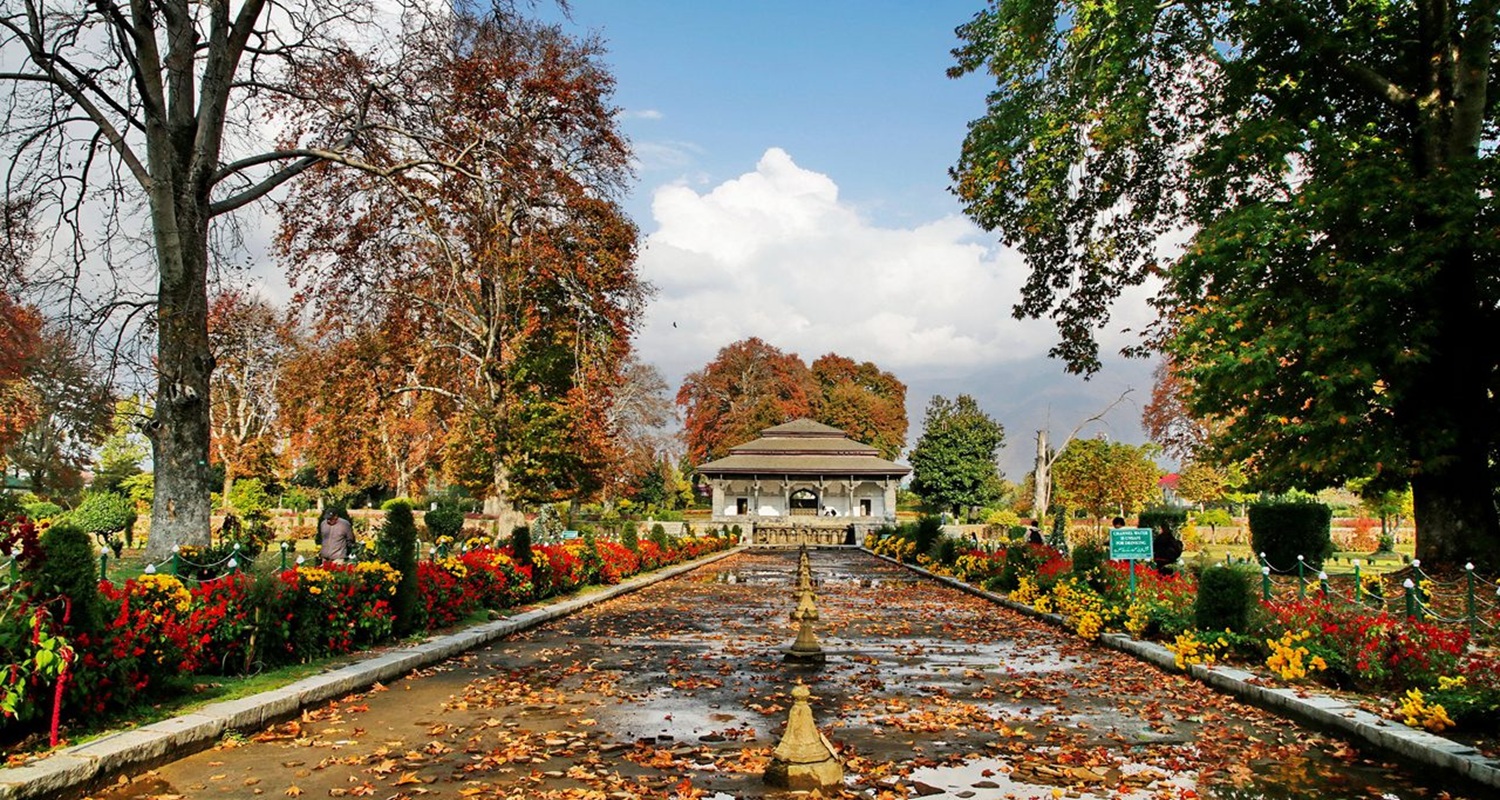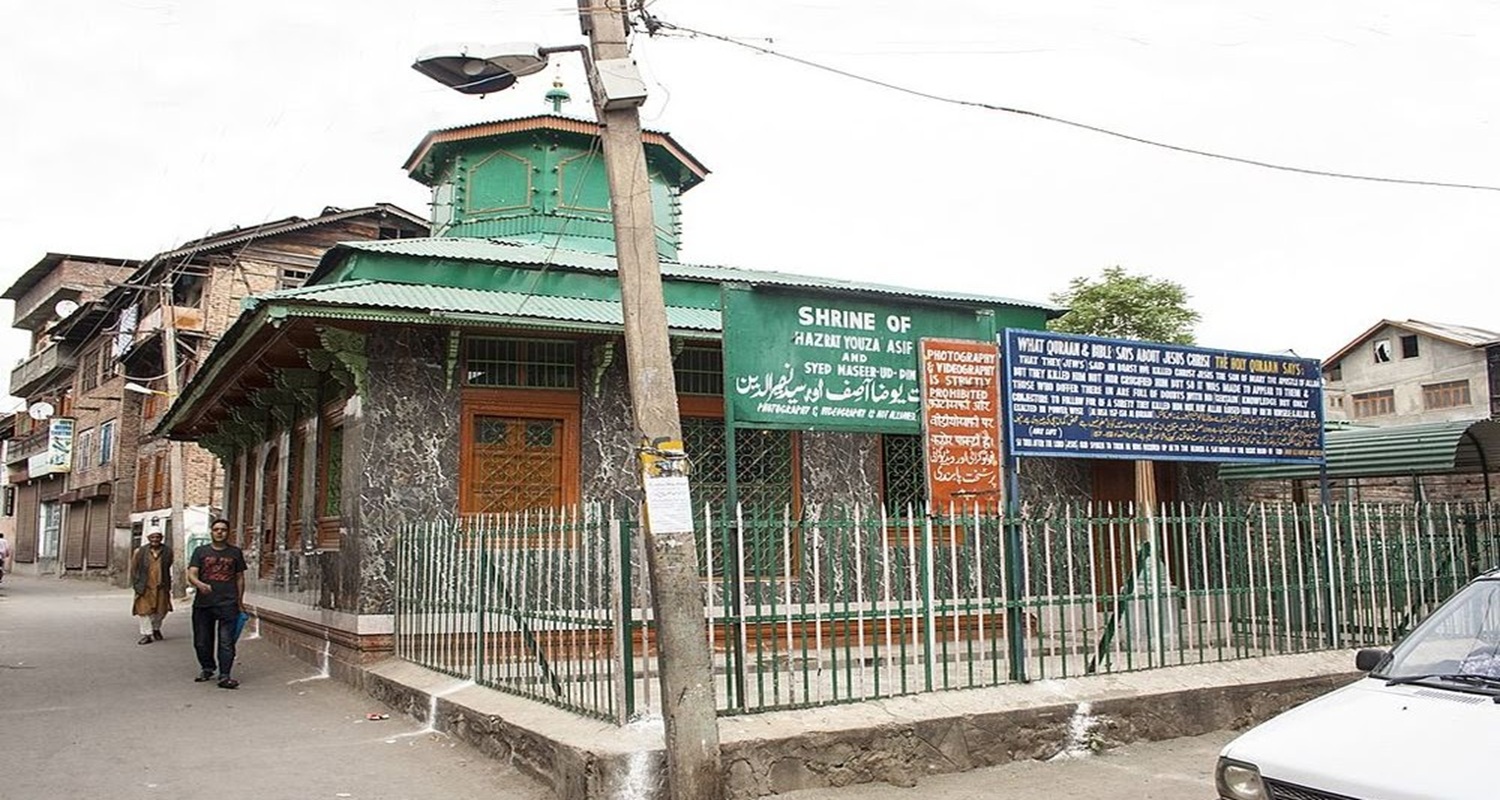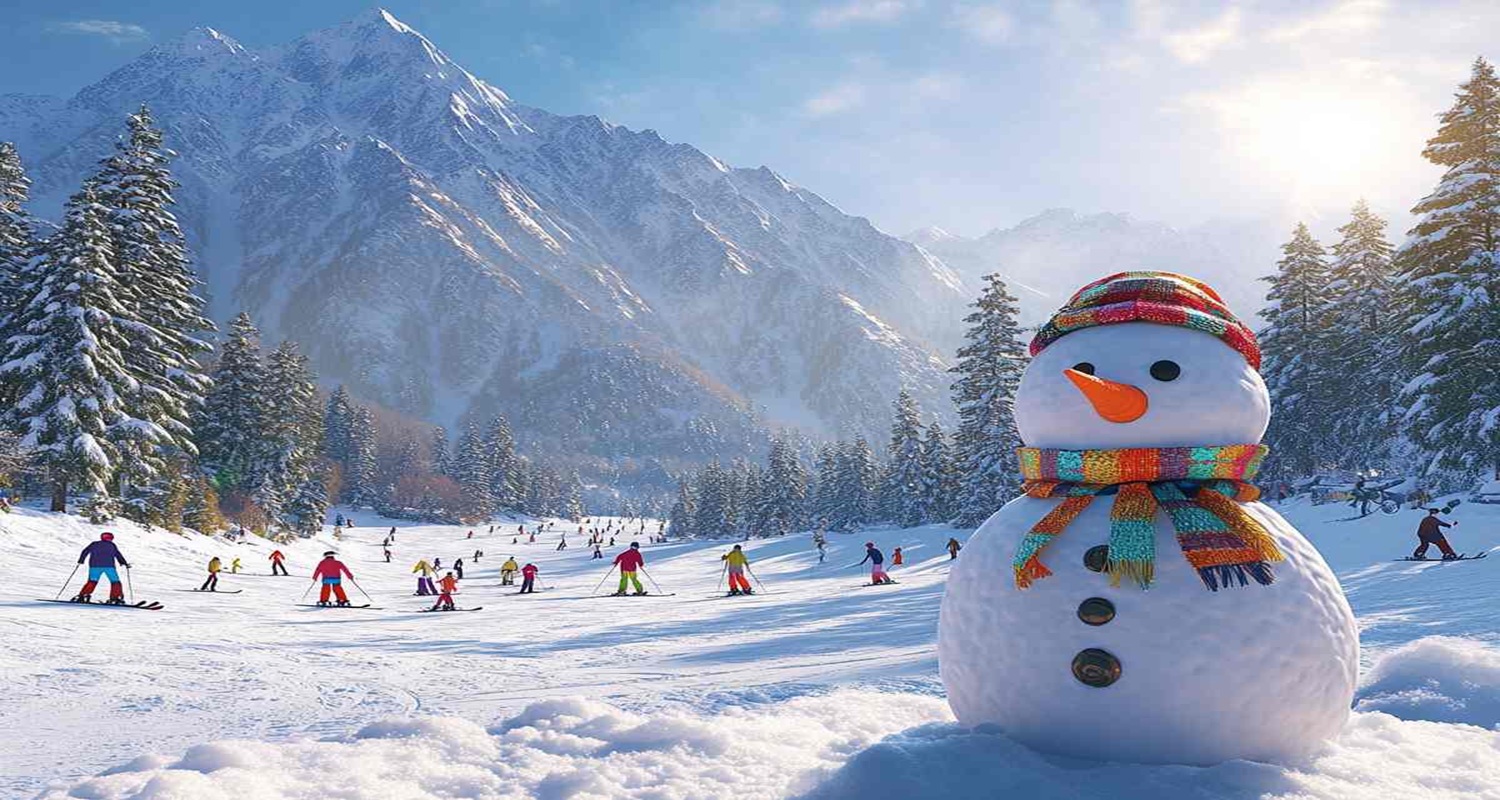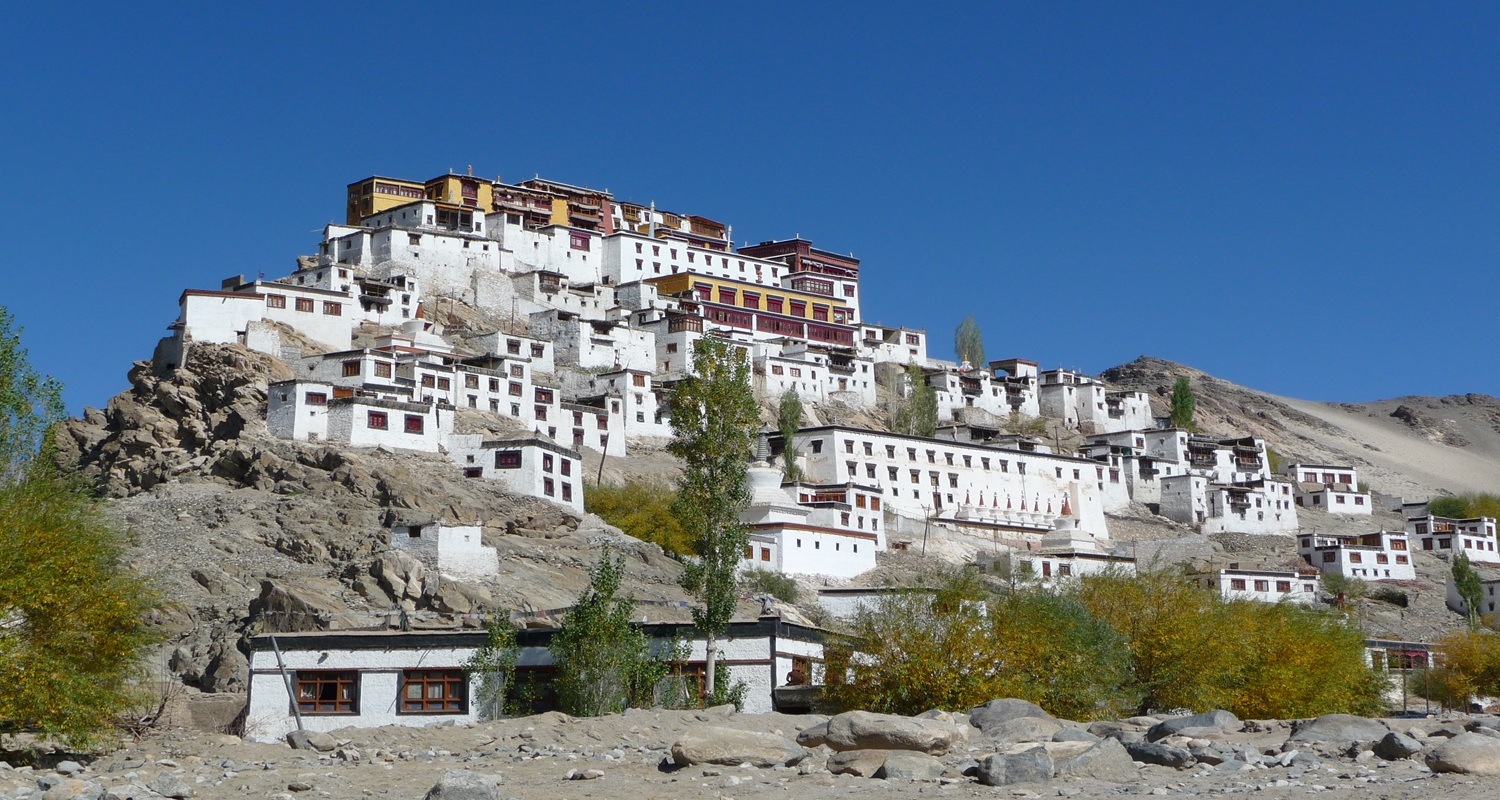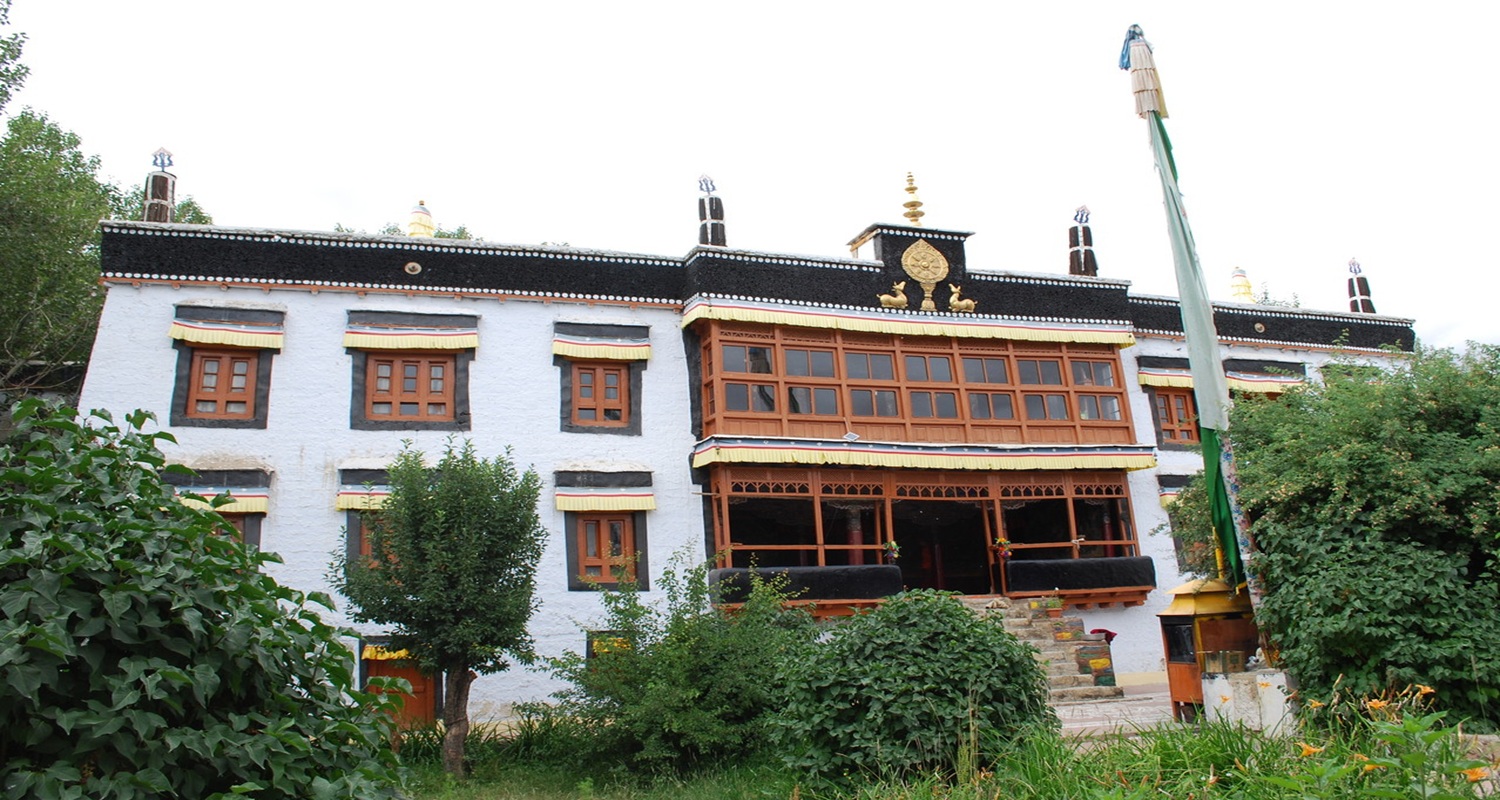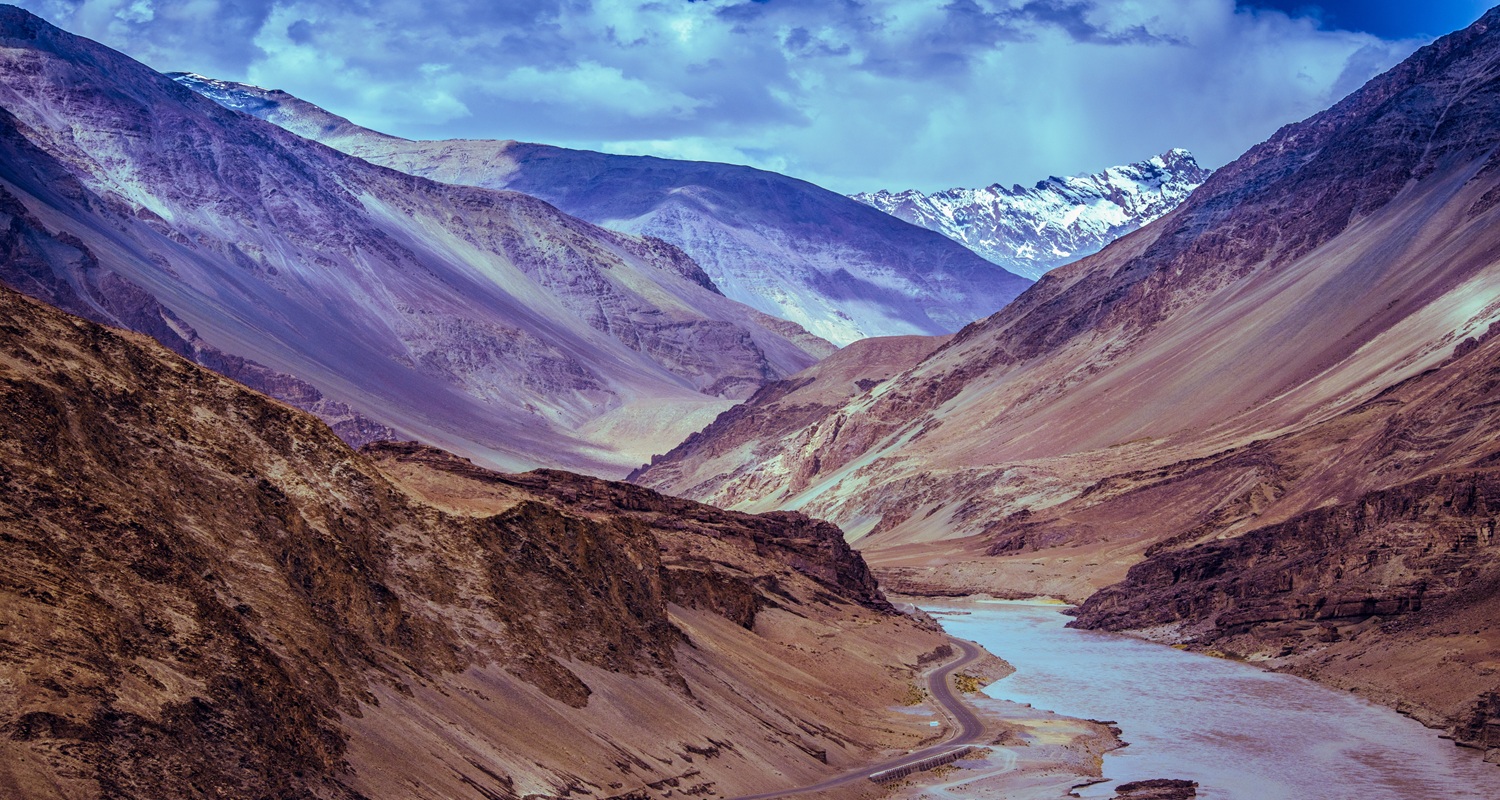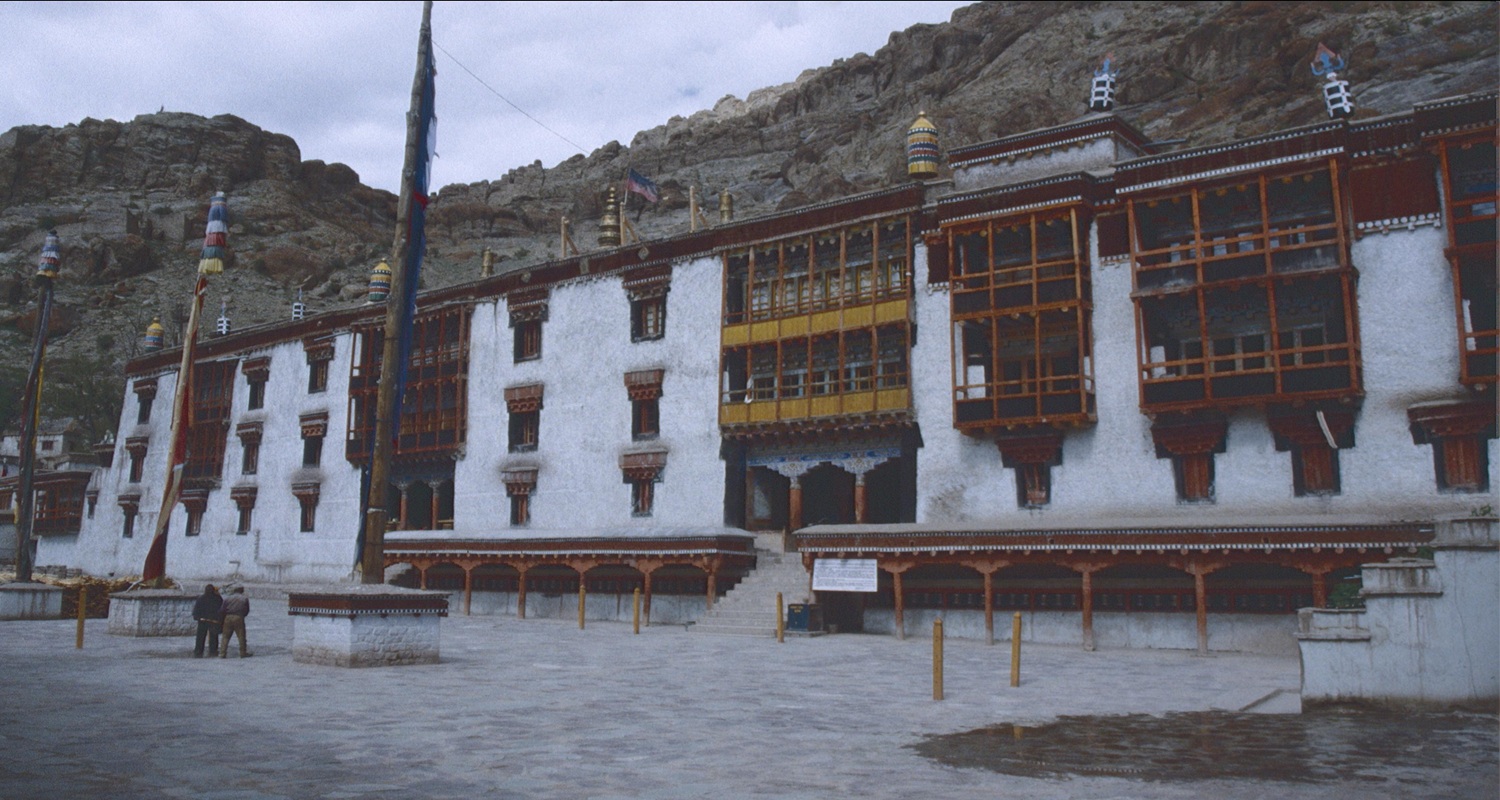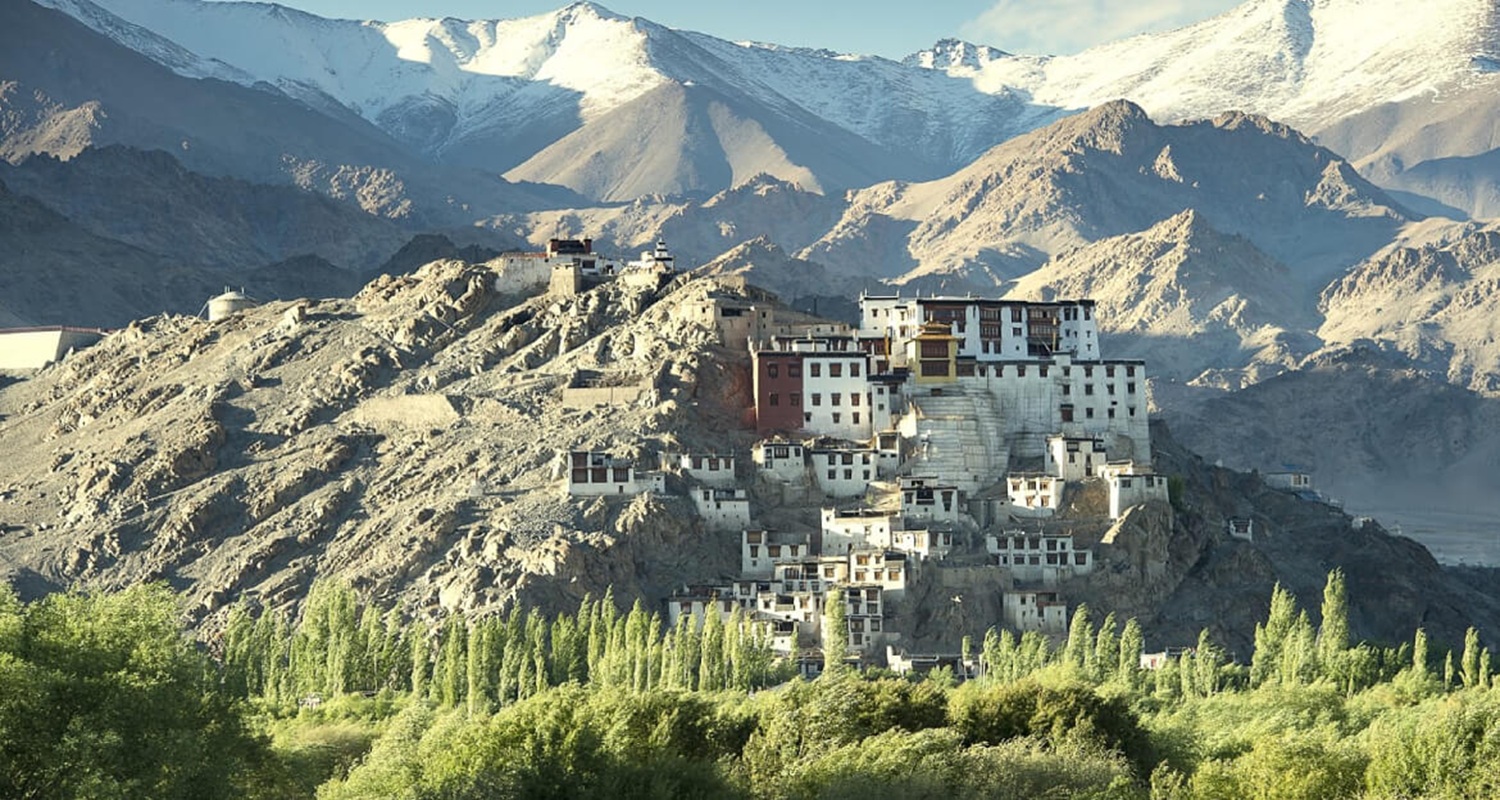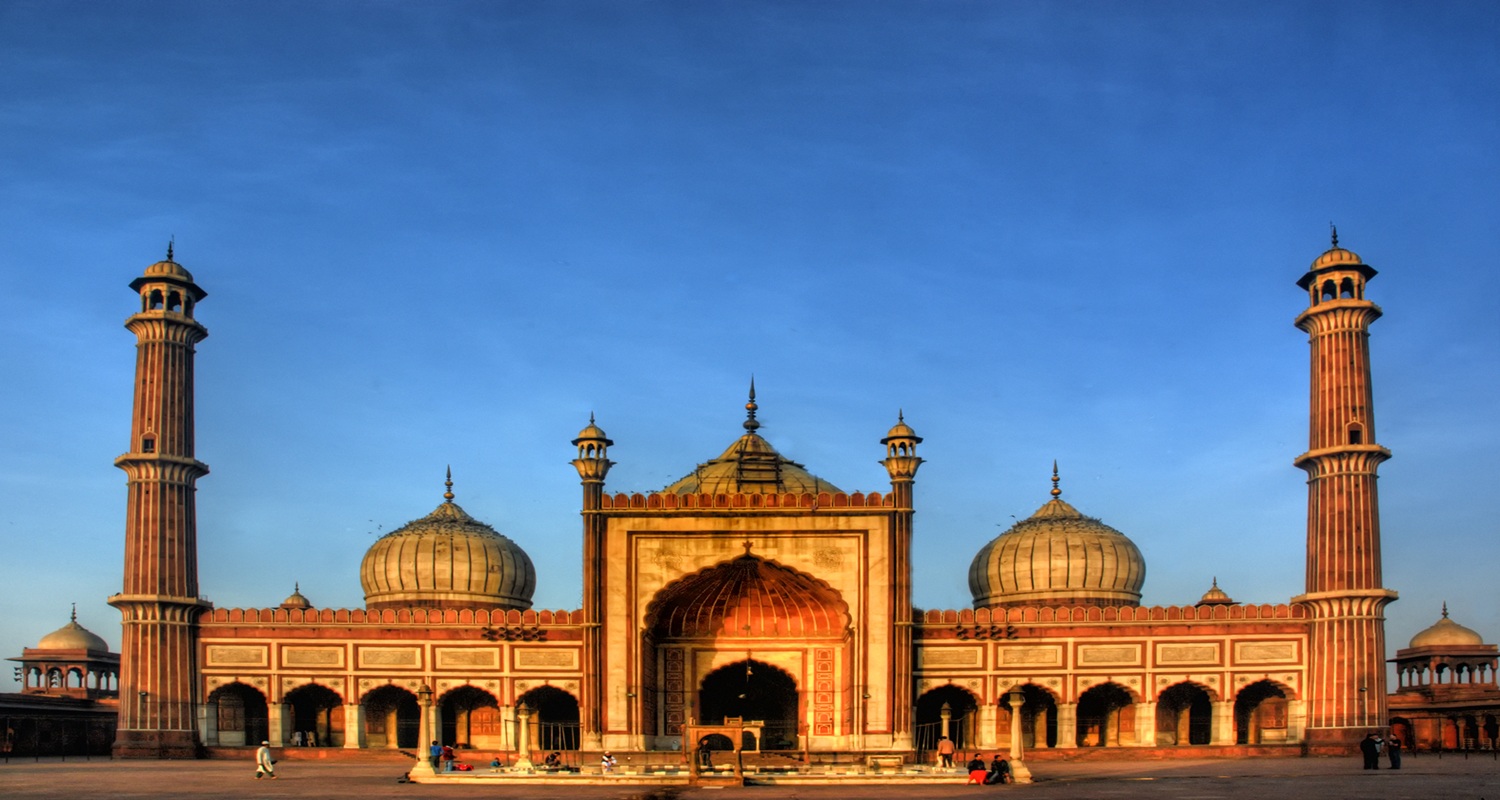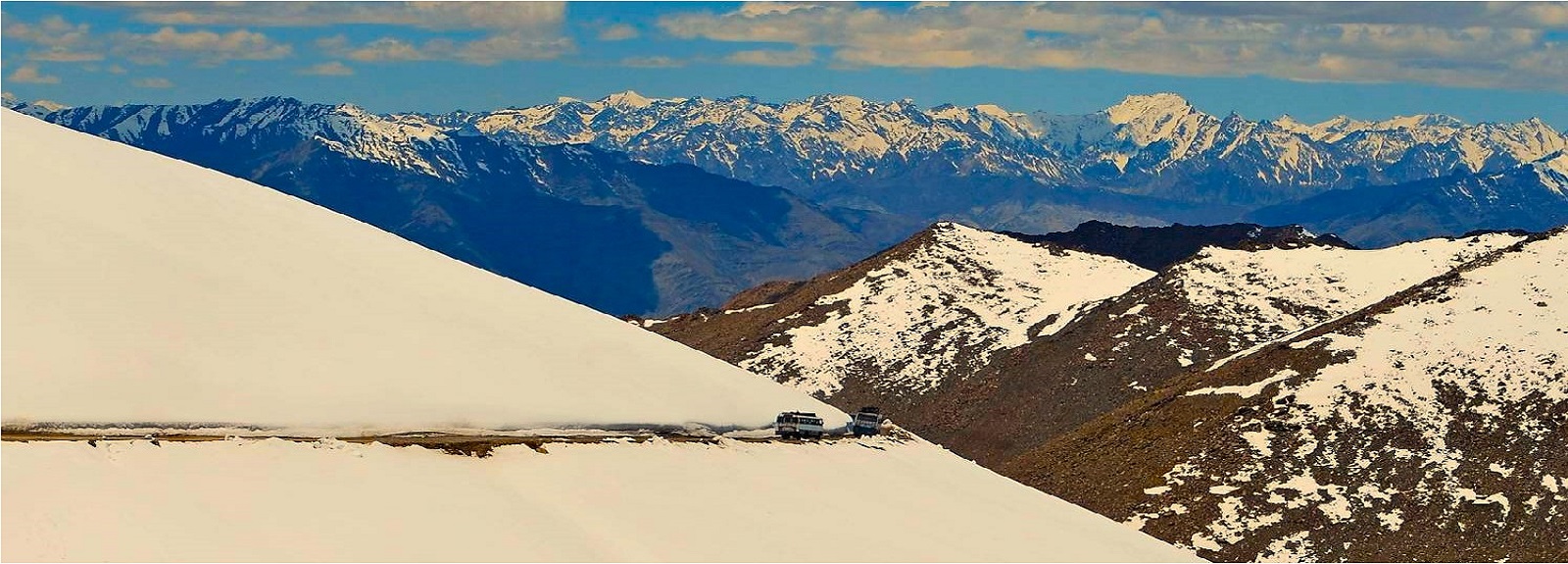
Himalayas
Paradise on Earth | Ladakh & Kashmir
NotIncluded
INR 120800 Per Person
3-4 stars
Travel Duration
10 Days / 9 Nights
Included in the trip
Individual departures
Round The Year
A tour to Ladkah and Kashmir is the height of adventure and fun. Ladakh is very High altitude place and is one of the highly coveted destinations for the tourists. It is the land of High Passes with some of the highest roads in the world like Kahrdung La, Zoji La, and Umling La. The place has contrasting landscapes and is a must visit, once in your life. mean whille Kashmir AVlley is famous for its Meadows and some of the very romantic places.This 7 nights 8 days trip takes you to Leh, Khardung La, Nubra and Pangong and you will visit renowned sites like the Magnetic hill, Gurudwara, Monastry, Jeep safari in the Nubra Valley and Panging Lake. and then Srinagar in the end. Engross yourselves in activities like camping, star gazing, double hump camel rides or motorcycling. A trip to Ladakh and Kashmir will keep tingling you with Happy Memories all your lifetime.
Stages Of Tour
Day 1
ARRIVAL AND SIGHTSEEING OF DELHI
Welcome to DELHI, The Capital of India. Your flight would land at INDIRA GANDHI INTERNATIONAL AIRPORT. After landing kindly head towards the immigration department and get your passport stamped. Immigration Department would stamp the Visa on your Passport. After the Immigration and Custom check Kindly Take an Exit from the Airport from EXIT GATE NO 4.
MY TOUR ADVISOR’S Representative would be waiting for you to welcome you outside the Gate No 4.
After the Meet Proceed towards the Visit of the CAPITAL of INDIA. You would be Covering following Monuments and activities.
1. VISIT OF OLD DELHI & JAMA MASJID
First you would be taken to the Old Part of the city, also Called as the Old City. It was once built by Emperor Shahjahan and was named Shahjahanabad. You will be visiting the JAMA MASID, the biggest Friday Mosque of India, which can host up to 20,000 Worshippers.
After the visit you can enjoy a Ride on Pedal Rickshaw through the narrow alleys of Famous Chandni Chowk Market which is famous for textiles, street food, spices, and many other items.
2. VISIT OF RAJ GHAT
After the visit of Jama Masjid Proceed Towards the Visit of RAJ GHAT which is the cremation ground of father of the Nation MAHATMA GANDHI.
3. PANORAMIC TOUR OF LUTYENS DELHI
After Paying Homage to the tomb of Mahatma Gandhi, Explore the Lutyens Delhi, Drive through India Gate, Indian Parliament and Government House.
4. VISIT OF QUTUB MINAR.
In the End Proceed towards the visit of Qutub Minar. It was built by First Muslim Ruler Qutbuddin aibak. After conquering the the last Hindu dynasty of Delhi. The Minar is a conical structure with a height of 72 metres. Once it was the most dominating structure of delhi.
After the visit you shall be transferred to your Hotels for check-in. Overnight Stay in DELHI.
Day 2
DELHI - LEH (Flight - 01.15 Hours Approx)
In the morning take a flight to LEH, on arrival meet with our representative transfer to your Hotel. Rest of the day at Leisure, In the evening take a stroll in the markets of Leh. Return to Leh and overnight stay in LEH.
LEH
Leh, the capital of the Union Territory of Ladakh, is a stunning high-altitude town located in the northernmost part of India, nestled in the mighty Himalayas. Situated at an elevation of around 3,500 meters (11,500 feet) above sea level, Leh is renowned for its breathtaking landscapes, ancient Buddhist monasteries, and rich cultural heritage influenced by Tibetan Buddhism.
Historically, Leh was an important stop on the Silk Route, serving as a trade hub connecting Tibet, China, and Central Asia with India. This legacy is still visible in its architecture, bustling markets, and monastic traditions. The town is dominated by the Leh Palace, a 17th-century structure that resembles a smaller version of the Potala Palace in Lhasa. Nearby, significant monasteries like Hemis, Thiksey, and Spituk offer a spiritual experience amidst panoramic mountain views.
Leh is also a gateway to spectacular destinations such as Pangong Lake, Nubra Valley, and Khardung La, one of the highest motorable roads in the world. The town attracts adventure seekers, spiritual travelers, and nature lovers alike, offering trekking, river rafting, and cultural experiences. With its unique blend of tranquility, tradition, and rugged beauty, Leh is not just a capital—it is the cultural and spiritual heart of Ladakh.
Day 3
LEH SIGHTSEEING
Full day dedicated to the visit of Leh and surrounding monasteries. Visit of the Thiksey Monastery, a large complex that houses an important study center for monks, and Hemis, one of the most important in the country which preserves an excellent collection of sacred texts and the largest Tanka of Ladakh Photographic stop at Shey monastery. Afternoon visit to the Spituk monastery and Phyang monastery, with its many rooms which house a collection of bronzes, ancient paintings and tantric rooms. Dinner and Overnight in Ladakh.
1. THIKSEY MONASTRIES
Thiksey Monastery, located about 19 kilometers from Leh in Ladakh, is one of the most prominent and beautiful Buddhist monasteries in the region. Perched on a hilltop, this 12-story complex resembles the Potala Palace in Lhasa (Tibet) and offers breathtaking panoramic views of the Indus Valley. It belongs to the Gelugpa (Yellow Hat) sect of Tibetan Buddhism and is an active center of monastic learning and spiritual practice.
2. HEMIS MONASTRY
Hemis Monastery, situated approximately 45 kilometers southeast of Leh in Ladakh, stands as one of the most significant and largest monastic institutions in the region. Nestled within the serene confines of Hemis National Park, the monastery is perched at an elevation of about 3,500 meters (11,500 feet) above sea level, offering breathtaking views of the surrounding Himalayan landscape. Established in the 17th century by King Sengge Namgyal, Hemis Monastery is affiliated with the Drukpa Lineage of Tibetan Buddhism.
3. SHEY MONASTRY
Shey Monastery, also known as Shey Palace, is a historic and culturally significant site located about 15 kilometers from Leh, in Ladakh, India. It was once the summer capital of Ladakh and the royal residence of the Namgyal dynasty before the seat of power was shifted to Leh. The monastery and palace complex are perched on a hill overlooking the Indus Valley, offering beautiful panoramic views of the surrounding mountains and farmland.
Built in the 17th century by King Deldan Namgyal, Shey Monastery is best known for housing one of the largest statues of Shakyamuni Buddha (historical Buddha) in Ladakh. The 12-meter-high copper-gilded statue, which occupies three stories of the monastery, was crafted by the best artisans of the time and is considered a masterpiece of Ladakhi Buddhist art. The walls around the statue are decorated with intricate murals and thangka paintings depicting scenes from Buddha's life.
Day 4
LEH – NUBRA VALLEY (160 – 5 Hours Approx)
Transfer to the Nubra valley through the spectacular Khardung La pass at 5602 meters above sea level.
On Arrival check-in to the Hotel. In the afternoon visit to the solar monastery of Samstaling and Diskit. At sunset, walk on the sand dunes with optional possibility of Bactrian camel safari. Dinner and Overnight
1. KHARDUNGLA PASS
Khardungla, is one of the highest motorable passes in the world, located in the Ladakh region of northern India. Situated at an elevation of approximately 5,359 meters (17,582 feet) above sea level, it connects Leh with the Nubra and Shyok valleys, serving as a vital gateway for both civilians and the Indian Army.
The pass offers breathtaking views of snow-covered peaks, dramatic landscapes, and deep valleys. Due to its extreme altitude, oxygen levels are low, and visitors are advised to acclimatize in Leh before attempting the journey.
At the summit, you'll find prayer flags fluttering in the wind, a small temple, and a signboard marking the height, making it a memorable photo stop. Khardung La is not just a high mountain pass—it's a symbol of endurance, freedom, and the spirit of the Himalayas.
Day 5
NUBRA VALLEY – PANGONG (220 Km – 5 Hours Approx)
After the breakfast, Transfer towards Pangong, Passing through the scenic views. On arrival at pangong Check-in at the Tents. In the afternoon stroll around the color changing lake and the sun set on the banks of lake. Dinner & Overnight in Tents.
1. PANGONG LAKE
Pangong Lake, also known as Pangong Tso, is one of the most stunning and iconic high-altitude lakes in the Himalayas. What makes Pangong Lake so captivating is its ever-changing shades of blue, which range from turquoise to deep azure, depending on the time of day and sunlight. The lake is around 134 kilometers long and is surrounded by dramatic, barren mountains that create a surreal, otherworldly landscape.
Despite being a saltwater lake, Pangong Tso freezes completely in winter, offering a rare and mesmerizing sight. The lake is ecologically significant and home to various species of migratory birds, including bar-headed geese and Brahminy ducks, especially during summer.
Day 6
PANGONG LAKE – LEH (222 Km | 5 Hrs Approx)
Early morning enjoy the picturesque view of Sun rise on lake. After Breakfast drive back to Leh, enroute CHANG LA Pass. On Arrive in Leh Visit the SHANTI Stupa and SANKAR GOMPA Dinner and Overnight in Leh.
1. CHANG LA PASS
Chang La is located about 75 kilometers east of Leh, on the route to the famous Pangong Lake. The pass connects Leh to the Shyok River valley and is one of the highest motorable road. The road is steep and often challenging, especially during winter months when snow and ice can make travel hazardous.
2. SHANTI STUPA
Shanti Stupa is a magnificent white-domed Buddhist monument located on a hilltop in Chanspa, Leh, Ladakh. Built in 1991 by Japanese and Ladakhi Buddhists, it symbolizes peace and commemorates 2,500 years of Buddhism. The stupa enshrines sacred relics of the Buddha and features intricate carvings and golden images. It offers panoramic views of Leh town and the surrounding mountains, especially stunning at sunrise and sunset. Accessible by road or a steep flight of steps, Shanti Stupa is both a spiritual site and a popular tourist attraction.
3. SANKAR GOMPA
Sankar Gompa, also known as Sankar Monastery, is a serene Buddhist monastery located approximately 3 kilometers from Leh in Ladakh, India. Affiliated with the Gelugpa or "Yellow Hat" sect of Tibetan Buddhism, it serves as a daughter-establishment of the Spituk Monastery and is the official residence of the Abbot of Spituk, the esteemed Kushok Bakula Rinpoche Sankar Gompa, also known as Sankar Monastery, is a serene Buddhist monastery located approximately 3 kilometers from Leh in Ladakh, India. Affiliated with the Gelugpa or "Yellow Hat" sect of Tibetan Buddhism, it serves as a daughter-establishment of the Spituk Monastery and is the official residence of the Abbot of Spituk, the esteemed Kushok Bakula Rinpoche
Day 7
LEH – ULEYTOKPO – LAMAYURU – KARGIL (240 Km | 5.30 Hrs Approx)
After transfer to Lamayuru Along the way, visit two of Ladakh's most beautiful monasteries Likir and Alchi, an absolute masterpiece of frescoes dating back to the 11th century. Transfer to Lamayuru and visit of the Lamayuru monastery, the oldest Gompa in Ladakh, located at the top of an incredible valley reminiscent of the lunar landscape. Proceed to Kargil. Check-in on arrival Dinner and Overnight.
1. LIKIR MONASTRY
Likir Monastery, also known as Likir Gompa, is a prominent Buddhist monastery situated in the Leh district of Ladakh, India. Located approximately 52 kilometers west of Leh, it rests atop a hill at an elevation of about 3,700 meters, offering panoramic views of the surrounding landscapes. The name 'Likir' translates to 'The Nag-Encircled,' referencing the belief that the monastery is protected by the spirits of two serpent deities, Nanda and Taksako.
2. ALCHI MONASTRY
Alchi Monastery, also known as Alchi Gompa, is one of the oldest and most significant Buddhist monastic complexes in Ladakh, India. It stands out for its unique architecture and ancient artworks. Traditionally, the monastery is attributed to the great translator Rinchen Zangpo (958–1055 CE), who played a pivotal role in spreading Buddhism in the region. Unlike many Ladakhi monasteries perched on hilltops, Alchi is situated on lowland, making it more accessible. The complex comprises several temples, including the Dukhang (Assembly Hall), Sumtsek (a three-storied temple), and the Manjushri Temple. These structures showcase a blend of Tibetan and Kashmiri architectural styles, evident in the intricate wood carvings and detailed murals.
3. LAMAYURU MONASTRY
Lamayuru Monastery, also known as Yuru Gompa, is one of the oldest and most revered Tibetan Buddhist monasteries in Ladakh, India. Perched at an altitude of 3,510 meters in the village of Lamayuru, approximately 125 kilometers west of Leh along the Srinagar-Leh highway, it is renowned for its rich history, spiritual significance, and unique lunar-like landscape, often referred to as "Moonland" due to its resemblance to the moon's surface.
Day 8
KARGIL – SRINAGAR (210 Km | 5 Hours Approx)
After morning brekfast start your drive towards Srinagar, along the way stop at picturesque valley of sonmarg. Arrival and check in Dinner and Overnight.
1. SONMARG
Sonmarg, meaning "Meadow of Gold," is a stunning hill station. Perched at an altitude of 2,730 meters, it is famed for its lush green meadows, snow-covered peaks, alpine forests, and the crystal-clear Sindh River. One of the main attractions is the Thajiwas Glacier, where visitors can enjoy snow even during summer. Adventure enthusiasts flock here for activities like trekking, trout fishing, river rafting, and in winter, skiing and snowboarding. The best time to visit is from May to August, when the meadows are in full bloom, though winter offers its own charm with heavy snowfall. With its breathtaking natural beauty and peaceful ambiance, Sonmarg is a must-visit destination for nature lovers and thrill-seekers alike.
Day 9
SRINAGAR
After breakfast tour of the city, visit the friday mosque. The mosque of Shah Hamdan and ROZA BAL Tomb which is considered by some to be the tomb of Jesus. Later visit the Nihsat bagh garden, built by Asif Khan the elder brother of Mughal Emperor Noor Jahan. Afternoon Enjoy a trip on Shikara, a typical houseboat on Dal Lake, through its beautiful canals, Dinner and Overnight.
1. SHAH HAMDAN MOSQUE
The Shah Hamdan Mosque, also known as Khanqah-e-Moula, is one of the oldest and most revered Islamic shrines in Srinagar, Jammu and Kashmir. Situated on the right bank of the Jhelum River between the Fateh Kadal and Zaina Kadal bridges, it was originally constructed in 1395 CE by Sultan Sikandar in memory of the Persian Sufi saint Mir Sayyid Ali Hamadani, who played a pivotal role in spreading Islam in Kashmir. The mosque is a prime example of traditional Kashmiri wooden architecture, showcasing intricate carvings, papier-mâché decorations, and a unique blend of Buddhist, Hindu, and Islamic design elements.
2. ROZA BAL TOMB
The Roza Bal shrine is a site of historical and religious significance. The term "Roza Bal" translates to "Tomb of the Prophet" in Kashmiri. The shrine houses the tombs of two individuals: Yuz Asaf (also known as Youza Asouph) and Mir Sayyid Naseeruddin, a Shia Muslim saint.
The identity of Yuz Asaf has been a subject of debate. In 1899, Mirza Ghulam Ahmad, the founder of the Ahmadiyya Muslim Community, claimed that Yuz Asaf was Jesus of Nazareth, suggesting that Jesus survived the crucifixion and traveled to Kashmir, where he lived out his remaining years. This perspective is maintained by the Ahmadiyya community but is rejected by mainstream Islamic scholars and the local Sunni caretakers of the shrine.
3. NISHAT BAGH
Nishat Bagh, meaning "Garden of Delight," is a splendid Mughal terraced garden situated on the eastern banks of Dal Lake in Srinagar. Commissioned in 1633 by Asif Khan, the elder brother of Empress Nur Jahan, it stands as the second-largest Mughal garden in the Kashmir Valley, following Shalimar Bagh.
Day 10
SRINAGAR – DELHI
After breakfast, visit the beautiful Mughal Gardens- Shalimar Bagh-the largest mughal garden in India located at northeast of Dal Lake near Srinagar city The Bagh has the Dal Lake in the background and considered to be very beautiful during the autumn and spring seasons.
Later Proceed to Airport to catch the Flight For Delhi. On Arrival in Delhi Transfer to International Terminal to Catch the flight for your Onward Destinations.
END OF THE SERVICES
The hotels
My Tour Advisor Provides a wide variety of hotels
Cost Per Person For Different Categories
| # | No of Pax | Standard | Superior | Prestige |
|---|---|---|---|---|
| 1 | 2 Pax | INR 120500 | INR 141300 | INR 160500 |
| 2 | 4 Pax | INR 108700 | INR 127200 | INR 144400 |
| 3 | 6 Pax | INR 102700 | INR 120000 | INR 136400 |
| 4 | 8 Pax | INR 96600 | INR113000 | INR 128400 |
| 5 | 10 Pax | INR 90600 | INR 106000 | INR 120000 |
Supplements
| # | Plan | Standard | Superior | Prestige |
|---|---|---|---|---|
| 1 | Single Supplements | INR 72500 | INR 84800 | INR 96000 |
| 2 | Half Board | INR 3600 | INR 7200 | INR 10800 |
| 3 | Full Board | INR 7200 | INR 14400 | INR 21600 |
| 4 | Christmas Supplement | INR 30000 | INR 35000 | INR 40000 |
| # | Months | Dates 1 | Dates 2 |
|---|
Inclusions
- Accommodation as per Itinerary on twin sharing with Bed and Breakfast Plan.
- Transport by private Air-Conditioned vehicle as per program.
- Professional English-Speaking Guide.
- Monument Entrance fees as per the Program.
- Train from Delhi to Ajmer in Ac 2nd Tier
- Rickshaw Ride in Old Delhi
- Visit of Abhaneri Step well - An 8th Century Architetural Marvel
- Hotel/port pickup and drop-off.
- 2 bottles of water per traveler per day
- Travel kit document bag
- One souvenir gift from MY TOUR ADVISOR
- Private and personalized services.
- All taxes, fees and handling charges
- GST (Goods and Services Tax)
Exclusions
- International Flights
- Visa and Insurances
- Food and drinks, unless specified.
- Gratuities (recommended).
- Anything not mentioned and specified in Itinerary.
TOUR HIGHLIGHTS
In accordance to the COVID 19 pandemic all our tours are operated with all precautionary measures including SANITIZED CARS AND HOTELS/COMPLIMENTARY SANITIZERS/MASKS (Your safety is our priority)
- All Inclusive Tour. – Hotels / Transport / Dinners / Monument Fees.
- Visit of Famous Hemis Monastry in Leh.
- Pass Through the Highest Motorable Road in the World at Khardungla Pass.
- Pangong Lake - One of the highest lake in the world.
- Enjoy the River, Dessert and Nature at Nubra Valley.
- Magnetic Hill of Ladakh.
- Lamayuru Monastry.
- Camel Safari on 2 humped Camel
Enquiry Form
Please fill the below form for more information
PASSPORT
A valid passport is required for at least six months before Boarding the Flight. We encourage you to check the validity of the passport and we advise you to bring a photocopy of your passport and the page of the visa obtained, or carry multiple copies of ETA, useful in case of loss.
INDIAN CONSULAR VISA
To enter India, an entry visa issued by the Indian Embassy is required. It is categorically necessary that all travellers, whose itinerary includes leaving and returning to the country, have obtained a double or multiple visas. During the flight to India you will be given a disembarkation form to be filled in with your data and to be delivered to passport control. The detachable part completed with the customs declaration will be returned to you, and must then be handed over to the customs upon leaving the airport.
INTERNAL FLIGHTS
Air tickets for flights within India or between India and Nepal, if not included in the intercontinental flight, will be collected by your companion or our representative and will be delivered to you upon arrival. Flights within India and between Nepal are the trickiest part of the journey. We recommend a lot of patience, because it is not uncommon for flights to suffer delays, cancellations or make intermediate stops not foreseen at the time of booking. It is therefore essential to always go to the airport on time (about 2 hours before the flight). In the event of cancellations, however, the companies, according to the new regulations, will refund the cost of the ticket but have no obligation to re-route. The rebooking will then be done by our local office by purchasing a new ticket. Purchasing it on the same day, the same fare as the canceled flight is not always available. In case this exceeds that of the cancelled flight, the difference must be paid directly on the spot. If there are no other flights on the scheduled route, a land transfer by car/bus will be provided in lieu of the ticket.
DOMESTIC FLIGHTS BAGGAGE ALLOWANCE
Since recently (August 2013) both on intercontinental flights and on internal flights, the companies are very strict in calculating the weight of the baggage and each additional kilogram is subjected to an extra payment according to the rules of the company itself. In this regard, we report the scheme concerning the baggage allowance for the economy class granted by each airline for flights within India and between India and Nepal:
Airline
Hand Baggage Weight
Checkin Luggage Weight
Air India
7 kg + Laptop
15 kg
Jet Airways
7 kg + Laptop
15 kg
Indigo & Spice Jet
7 kg + Laptop
15 kg
Go Air
7 kg + Laptop
15 kg
Jet Lite
7 kg + Laptop
15 kg
The company has the right to apply an extra cost for each kilogram exceeding the above, (indicatively from 4 to 8-euro per kg).
LOCAL GUIDES AND ESCORT TOURS
For the entire duration of the group tour, starting from your arrival in India, you will be assisted by a Tour Escort or local Guide (for individual tourists) in each city who will take care of every technical-organizational detail. The tour escort will also act as a local guide in the cities for which he is licensed. In the others he will be accompanied by a local foreign speaking guide or English-speaking guide as per the provisions of the Indian government. In the latter case, he will provide for the translation.
In many cities of India, in fact, there are no local guides speaking foreign languages (especially in southern India, central India and some parts of Rajasthan), or there are few.
THEFT
We remind you that passport, telephone and valuable accessories in general must always be kept by the passenger and never left unattended, as no service facility takes charge of any loss/theft during the tour. It is also good to have all the emergency bank numbers with you in case of need.
TIPS
In India, tipping is a custom rooted in local custom. The amount of tips is at the discretion of the passengers, but as a rule they are in the local custom. In restaurants it is customary to leave 10% of the bill as a tip.
A basic tip:
For half day drive with driver Rs. 300/ full day Rs. 500.
For porters Rs. 70 per bag
For Half Day Local Guide Rs. 500/ Full Day Rs. 800
Per Day Escorts Rs. 1000
(The amount is in total and refers to a group of 2/3 people, it can be increased if you are traveling in a group with more people)
For groups, even small in number but with tour escorts, it is advisable to give the guide a sum at the beginning of the tour (approximately 40/45 euros for 7/9 day tours) and he will distribute them appropriately, thus avoiding boring and continuous collections.
N.B. (This figure does not include a possible tip for the companion)
ROOM AVAILABILITY
The rooms are available until 12.00 on the day of departure. In India there is no day use system, therefore if the rooms want to be kept until departure they will have to be paid for the entire following night.
CHECK-IN ONLINE
We inform you that the check-in procedure can take place via online check-in, which can be implemented from the airlines' websites or via the automatic check-in devices specifically installed at the airport.
CLIMATE
The most pleasant season runs from mid-November to March, with moderate heat and low rainfall. The maximum temperatures vary from 27° to 30°, the minimums from 16° to 22°. In March the temperatures begin to rise with highs reaching 38°. The month of August records the peak of the monsoon season (from June to October) which invests the south-western regions with rainfall that varies in intensity according to the areas, limited in some to severe thunderstorms. In October and in the first half of November the south-eastern part of India is affected by a north-east monsoon.
CLOTHING
Clothing must take into account the period and the regions where you go. In southern India, light clothing can be worn all year round, without forgetting long trousers and long-sleeved shirts to protect against insects. During visits to the temples, excessively small clothing should be avoided. For those traveling to the northern regions, warmer clothing is needed, as the temperature can approach freezing in winter. In the desert region of Rajasthan the temperature varies a lot between day and night.
SHOPPING
In India the variety of handicraft production is practically infinite. Indian muslins, canvases, silks and brocades have enjoyed worldwide fame since ancient times and have been appreciated for the quality of the fabric, the beauty and resistance of the colors, the originality of the designs. Even today the brightly colored silk saris, embroidered or woven with gold or silver threads, the brocades of Varanasi as well as the cottons of Rajasthan, the wool or wool and silk carpets of Kashmir and Uttar Pradesh are renowned. The manufacture of fabrics is just one aspect of the varied and rich Indian craftsmanship which ranges from wood carving (teak, sandalwood, rosewood, ebony) spread almost everywhere, especially in Karnataka, to Agra marble inlays or the stone sculptures of Orissa, from ceramics to hand-painted lacquers, from brass and copper pottery to bamboo and leather objects. The skill of the Indians in the cutting and processing of semi-precious and precious stones has been known since ancient times. Haggling in the bazaars is common practice.
Do not buy souvenirs that cost animals their lives or harm nature.
FOOD AND DRINK
It is recommended to drink only bottled or boiled water (found in almost all restaurants and hotels). Carefully avoid tap water and ice in drinks. It is advisable to consume only well-cooked foods and packaged foods, avoiding raw vegetables and fruit that cannot be peeled.
MEDICAL ASSISTANCE
In India there is a great variety of doctors practicing the most diverse forms of therapy and the only hospital in Europe is located in Delhi. It is advisable to bring from Italy tablets against any gastrointestinal disorders and medicines that are difficult to find locally.
BEHAVIOUR
Before entering the temples, mosques and or gurdwaras it is essential to take off your shoes, generally it is allowed to keep your socks on. To avoid discomfort, do not bring leather articles of any kind with you, because they could arouse some opposition. Inside places of worship, tourists can move as they please and sometimes attend religious rites, for which it is preferable to wear modest clothes, avoiding tops, skirts and shorts. A small donation will be welcome.
The folded hands namaste is the typical Indian greeting and its use will be greatly appreciated. Especially in cities, men will gladly shake hands with tourists; in fact, this gesture is considered particularly cordial. The majority of Indian women, on the other hand, are reluctant to shake hands with a man, both Indian and foreign (a possible refusal should not be considered an offense) and are generally surprised by the informality of relations between the two sexes used in western countries. In private homes you will be welcomed as guests of honor and your lack of familiarity with local customs and traditions will be understood and accepted. If you should be tempted to eat with your fingers, remember to use onlyyour right hand.
GASTRONOMY
Indian cuisine varies according to the regions, with notable differences between the southern and northern regions, but has as a common feature the wise use of spices which are used not only to flavor foods but also to aid digestion. In the north it looks remarkably like that of Middle Eastern or Central Asian countries; there is great use of chili (hot pepper), the staple food is wheat, and various types of unleavened bread are consumed, such as pooris or chappatis. The meats are quite common, naturally not beef. In the south, where the Muslim influence has been less strong, vegetarian diets prevail, and the cuisine revolves around rice, consumed in an infinite variety of ways. The highly savory taste of Indian foods is related to the blend of spices frequently used in food preparation. These mixtures (kari) can accompany various vegetables, chicken or lamb meat, fish or rice. Rogan josh (lamb curry), gishtaba (spiced meatballs with yoghurt), korna (vegetable meat-based stews) are very common in the north. In the south, various vegetable dishes are widespread, including bhujia (a vegetable curry) and along the coasts, fish dishes, the Cochin prawns are delicious. Perhaps the most common dishes throughout India are, however, the simple dhal, essentially a lentil soup, and the thali, the typical vegetarian dish, usually served on a tray with small bowls full of vegetables accompanied by large -of quantity of rice. Among the desserts, kulfi, the typical pistachio ice cream, is very common, while tropical fruit is very abundant. It is a frequent habit to conclude the meal by chewing pal, a mixture of spices, betel nuts and other powders, all wrapped up in an edible leaf. Tea is the most popular drink and some varieties of Indian tea are famous all over the world. Try the rice beer.
LANGUAGE
In India a large number of local languages are spoken, very different from region to region, among which Hindi is the official one. English represents a strong instrument of national cohesion and is very widespread, especially in hotels or in places frequented by Westerners.
RELIGION
Religion forms an integral part of India's complex tradition. Four of the most important faiths in the world meet on this territory: Hinduism, Buddhism, Christianity and Islam and among these the first two were born in India. furthermore, this country which welcomed the Jews and the Parsees (followers of Zoroaster), who then integrated into Indian life, gave rise to Jainism, Sikhism and other innumerable cults and regional sects of lesser importance and which for centuries have acted and interacted with each other.
AIRPORT FEES
They usually already include exit taxes from the country. However, we recommend checking at the airport, as these are subject to change regulations.
PHONE
The cellular network is active in the country, however Italian cell phones are only active in the main cities and it is therefore advisable to purchase a card locally. To call from India the area code is 0039. To call India dial 0091.
VACCINATIONS
No mandatory vaccination is required for travelers from Italy. Before travelling, it is advisable to consult the competent ASL on the need to carry out vaccinations or appropriate prophylaxis. In general, subject to medical opinion, vaccinations against: diphtheria, hepatitis A and B, typhoid, tuberculosis, polio and tetanus booster are recommended. However, we recommend checking the Viaggiare Sicuri website at the link http://www.viaggiaresicuri.it/index.php?india
CURRENCY
The legal tender in India is the Indian Rupee. It is advisable to have currency in US dollars especially for entrances, Euros are also welcome. No Indian currency can be brought into the country or exported, while any amount of foreign currency can be imported. It is very complicated to exchange the Rupee in another currency, so it is advisable to buy in such quantities as to no longer have liquids in local currency at the time of departure. Credit cards, preferably from the VISA circuit, are accepted both in authorized shops and in hotels in large cities, where automated bank branches can also be used.
Our Staff
Our guides and professional escorts have experience in the area and in-depth cultural preparation. We can provide Guides in differenr languages also in most of the sectors but in some areas there shall be only english speaking Guides available, Such as Ladakh and the Himalayan areas, Kindly do check it with our travel experts regarding the availabiluty.
Means of transport
Our organization boasts a large fleet of new generation air-conditioned means of transport: from standard or deluxe cars (2/3 pax) to Overland vehicles (2/3 pax); from minibuses (4/8 pax) to grand tour buses (10/40 pax), with professional English speaking drivers, always attentive to the needs of travelers. The roads that connect the main cities of India are generally good. Indian Traffic conditions limit the transfer times to an average of 50 km per hour.
Hotels and tented camps
In Indian Subcontinent, the official category of hotels does not guarantee international standards and does not always correspond to the expectations of the traveler. The structures that MTA chooses, from luxury hotels, to Heritage Hotels (former residences of the Maharajas), to lower category hotels, are periodically supervised by our staff. In the Himalayan areas of Ladakh, hotels are provided among the best existing and standard tented camps with limited comfort, where a good spirit of adaptation is required.
Flights
The Major airports where International flights Land are Delhi, Mumbai, Chennai, Kolkata, Bangalore, Hyderabad, Almost all of the major International Airliens have theor scheduled flights from these cities. including Swiss, Emirates, Qatar Airways, Turkish Airlines, BrusselsAirlines and Etihad.
Personalized trips
Our Product Managers are available to travelers to develop personalized itineraries (for individuals or groups) and offer ad hoc programming, designed with maximum flexibility and with smallest details, for those who want to immerse themselves in the magic and spirituality of " Land of the Gods” outside the classic Itineraries or with programs already present in the catalog. MTA is also available to develop personalized travels in cinema, nature, sports, honeymoons, incentive travel, business tourism and medical tourism in India.
India Visa
To obtain an entry visa to India it is essential to have a passport valid for 6 months from the date of travel (with at least three consecutive free pages), and two passport photos. you can apply for ETA (Electronic Travel Authorization) The Link of the website is https://indianvisaonline.gov.in/evisa/tvoa Kindly check for permission Granted on ETA before boarding your flight.
